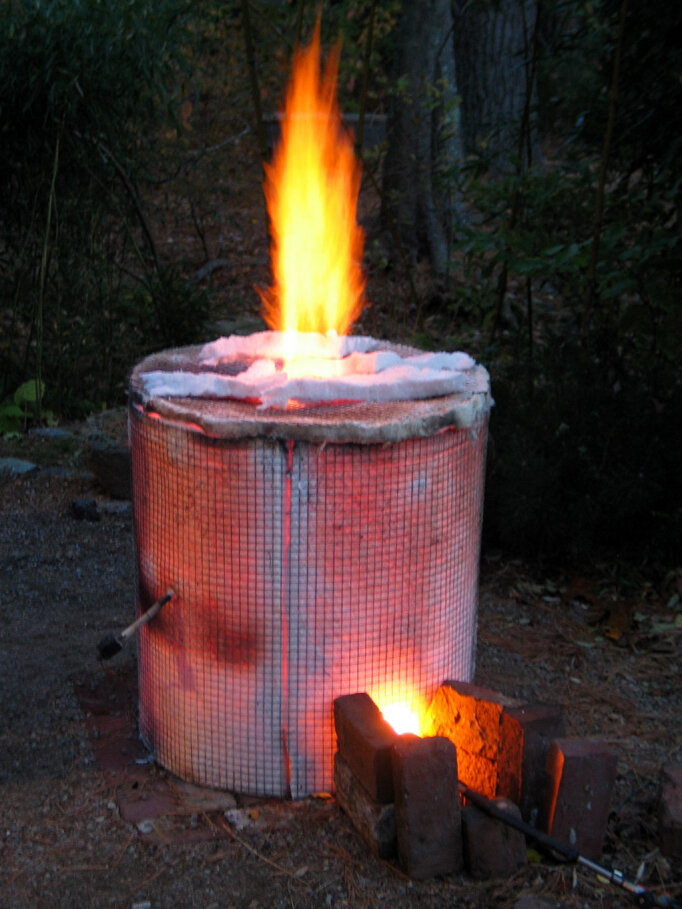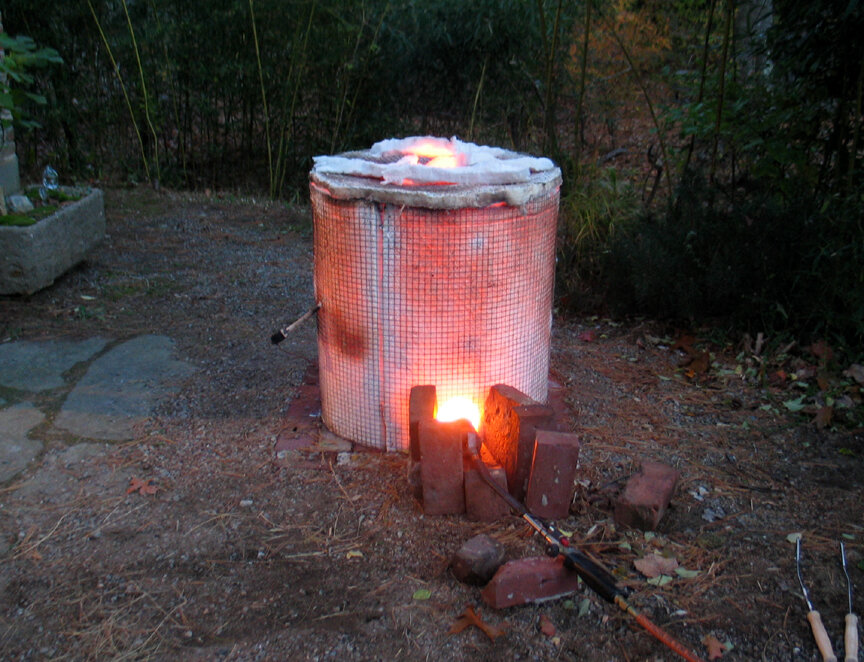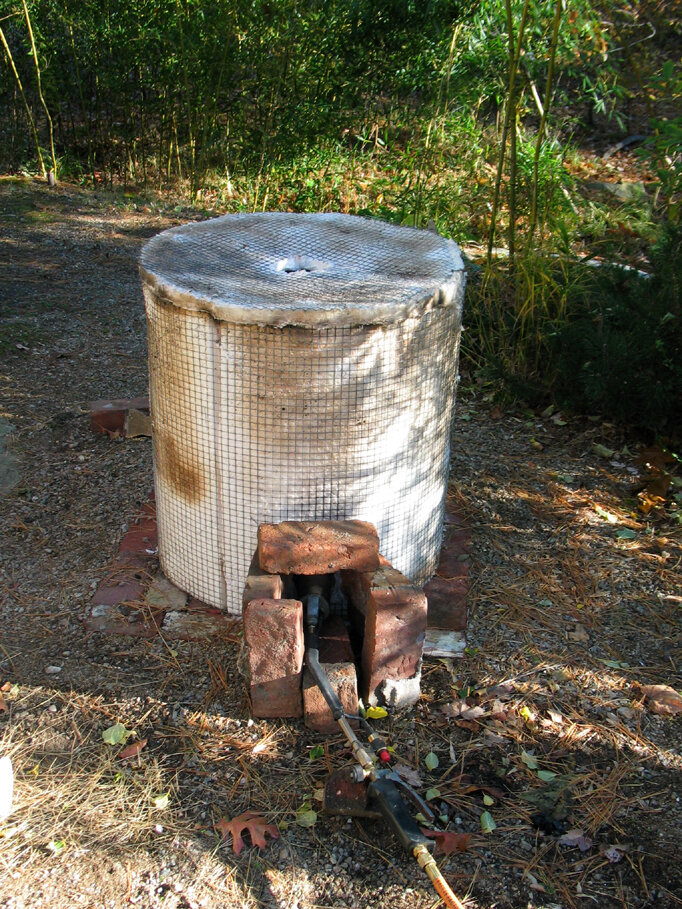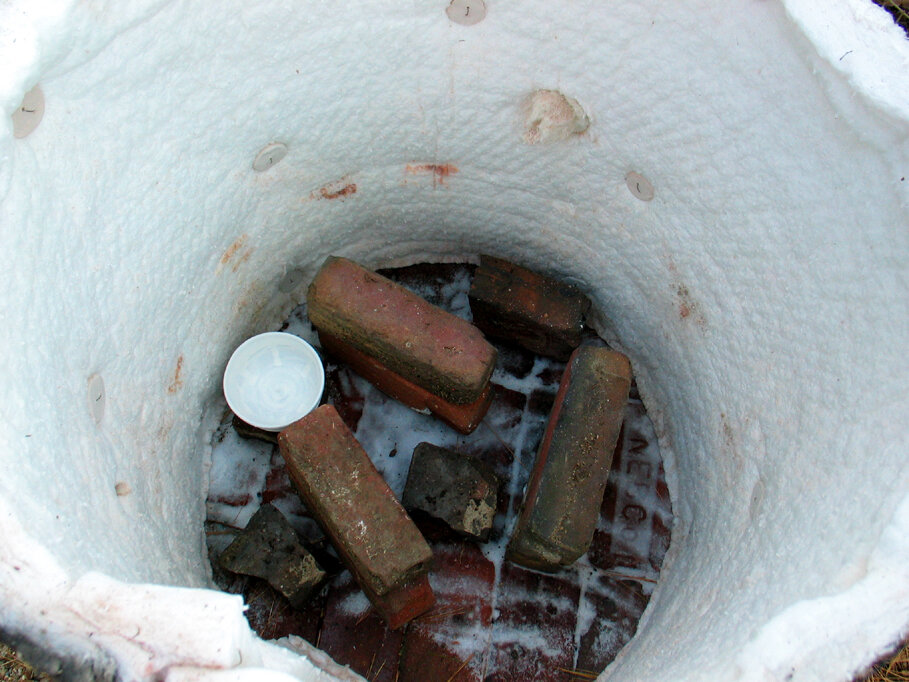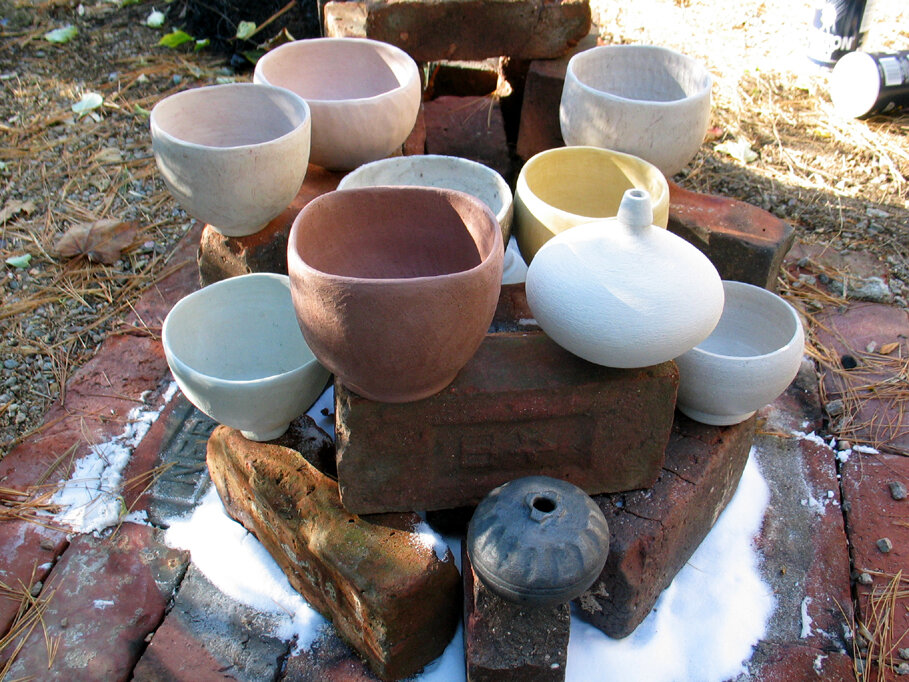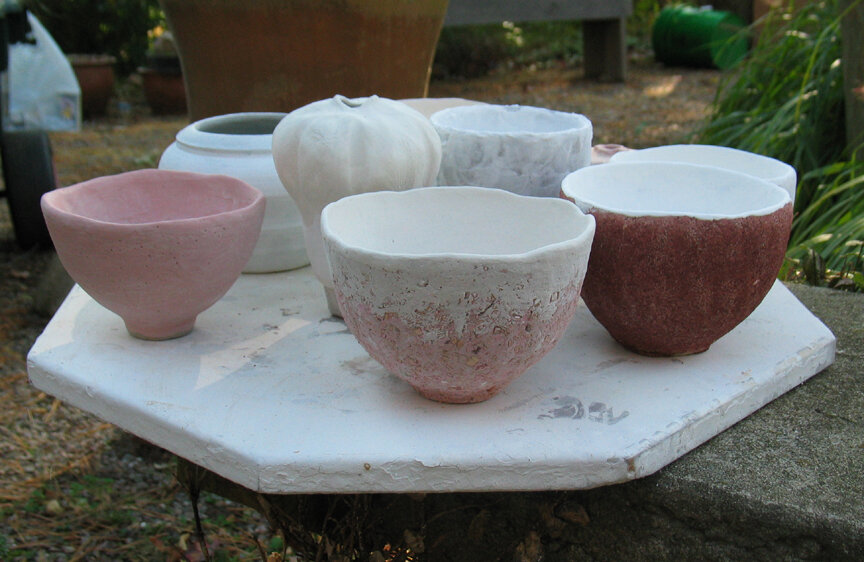The Raku Kiln
I’ve been asked so many times over the years how my work is made, and how my pottery work is fired, so I thought I would write and show some answers to that in a few different blogs. There was my glass furnace, annealing kilns, pickup kiln, glass fusing kilns for glass, and for pottery, electric kilns, a dugout pit for pit firing, barrel firing, a wood firing kiln, and shown here, the simplest of all, my Raku Kiln. This Raku kiln was extremely simple to make, and very inexpensive as well. As you can see, it is just hardware cloth (galvanized cage wire) lined with fiberfrax on the interior. Easily made ceramic buttons were used to hold the fiberfrax to the wire, the buttons inside the frax and wired to the external cage with kanthal wire. (This can be seen in the photo of the interior). The top was made in similar fashion. A hole at the top as a flue, a hole in the bottom for a burner, in this case, a very inexpensive Weed Burner and a small propane tank, same as used for a BBQ. The fiberfrax is a wonderful material for this, and the temperature can be brought up very quickly to the 2000 degree (F.) range. A simple firebrick base pad, and some firebrick inside to hold shelves or the pottery. There are many treatments that can be used with this type kiln, both within the kiln and by treating outside the kiln while hot. I show some of the pieces before firing, and how they were placed in the kiln for firing. Often a reduction atmosphere is used for the desired results. This is done by starving the flame, the interior, of air (oxygen) and can be seen in the photo with the flame shooting out top looking for oxygen. The photo without the flame is an oxidizing atmosphere, where there is plenty of air for the fuel to combust within the kiln. Many of my tea bowls, seed pots, and bud vases were fired this way.
There needs to be a “don’t try this at home” statement here. This can be extremely dangerous, as you are working with gas and open flame. Explosions are possible if not careful, and of course causing a fire is also possible. Burns (severe) are possible, likely if not extremely careful and knowledgeable about what one is doing. You are working with gas, open flame, (and unburned gas contained within the kiln will explode if exposed to flame, as might the tank if too close to the kiln). You are, very quickly, working with something that is over 2000 degrees fahrenheit, and if you think an oven is hot at 3 or 4 hundred degrees, you will be in for quite a shock when burned with 2000.
Lots of photos and writing on the wood burning kiln coming soon.
